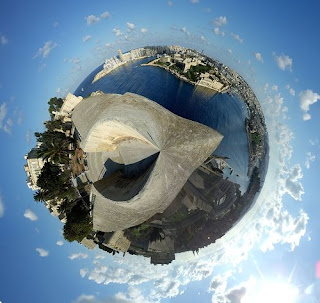 I was just reading Guy Kawasaki's blog, How to Change the World, when he referred to Garr Reynold's Blog, Zen of Presentation. I had never heard of this blog before but it is filled with Garr's reflections on "issues with professional presentation design." We talk about Visual Literacy in our classes but Garr is living it. He discusses how the media succeed and fail in using visuals to convey their messages. Looks like he has a book called Presentation Zen.
I was just reading Guy Kawasaki's blog, How to Change the World, when he referred to Garr Reynold's Blog, Zen of Presentation. I had never heard of this blog before but it is filled with Garr's reflections on "issues with professional presentation design." We talk about Visual Literacy in our classes but Garr is living it. He discusses how the media succeed and fail in using visuals to convey their messages. Looks like he has a book called Presentation Zen.One of his postings that I found exceptionally inspiring was entitled "Beautiful example of the visualization of a story." He discussed the D-PAN (Deaf Performing Artists Network). This is an organization that creates "media designed specifically to serve deaf audiences through the use of American Sign Language (ASL). It would be repetitive to post them here, but Garr has embedded samples of videos the D-PAN created as well as a CNN new report. The message that they "have a dream" is beautiful.
Oh, well . . . I guess I will be repetitive by embedding the "Waiting for the World to Change" Video here.
P.S. I also found Guy's posting The 10/20/30 Rule of PowerPoint This is where Guy says that no PowerPoint should have more than 10 slides, last longer than 20 minutes or use a font less than 30 pt. The first two were incontrovertible, but he got soft on the font rule by saying that you should take the age of oldest person in your audience and divide by 2 to determine your minimum font size. That would mean that I would cause you to use 27.5 fonts. Should be interesting. ;-)









